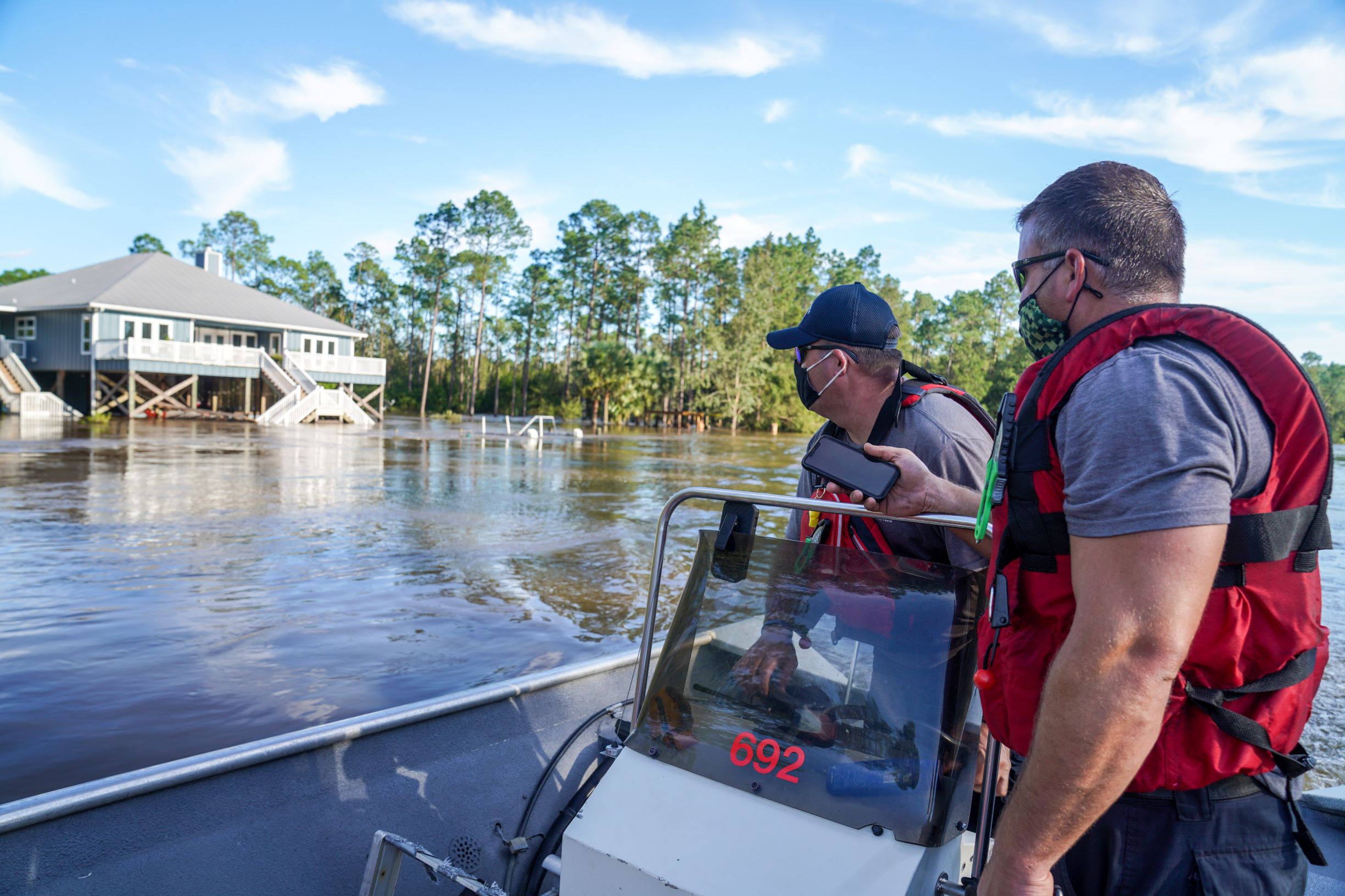Hurricane Sally made landfall on Tuesday near Gulf Shores, Alabama, as a category 2 hurricane, causing widespread flooding and leaving behind a trail of destruction. As conditions calm and the damage becomes clear, recovery efforts continue along the Gulf Coast.
Over the last week, President Trump has approved Emergency Declarations for affected areas in Alabama, Florida, Louisiana and Mississippi. These declarations allow states to receive federal assistance and coordinate all disaster relief efforts in response to Hurricane Sally.
FEMA continues to have supplies available nearby, with shuttle drivers and trailers ready to move these assets out to fulfill state requests. Supplies include over 4 million liters of bottled water, 3.2 million meals, 289,000 blankets, 117,000 tarps, 6,500 cots and 23 generators. As of Friday, six shelters are open with a population of 366 in affected areas throughout the Gulf Coast.
Due to the coronavirus (COVID-19) pandemic and the need to protect the safety and health of all Americans, FEMA will conduct remote home inspections to expedite the delivery of recovery assistance to applicants based on their eligibility.
As survivors return home, document damages and begin cleaning up debris from Hurricane Sally, it is important to contact your local emergency management or public works agencies to get information about sorting guidelines and pickup schedules. Follow these guidelines when clearing debris:
- Wear safety gloves and glasses when cleaning up.
- Wear sturdy shoes or boots when walking on, or near, debris. Wear long sleeves and gloves when handling debris.
- Don’t drive or walk through flood waters. Be aware of downed power lines, standing water and other hidden hazards.
- When clearing debris from a property, make sure you know the location of all utilities, both underground and overhead to prevent personal injury.
As you clean-up, you may see neighbors clearing debris as well. While recovery is a whole community effort and it is important to check on neighbors, use caution when doing so. Continue to wear masks to prevent the spread of COVID-19.
While you may want to help other survivors, do not put your life at risk by self-deploying to affected areas. Instead, find trusted organizations that are operating in the affected area. They will know where volunteers are needed and can ensure appropriate volunteer safety, training and housing. Financial contributions to recognized disaster relief organizations are the fastest, most flexible and most effective method of helping.
FEMA will remain engaged in response and recovery efforts and partner with states, local governments, tribes and community organizations to make sure help arrives in the areas where it is needed most.
To find out how you can help, visit FEMA.gov.



